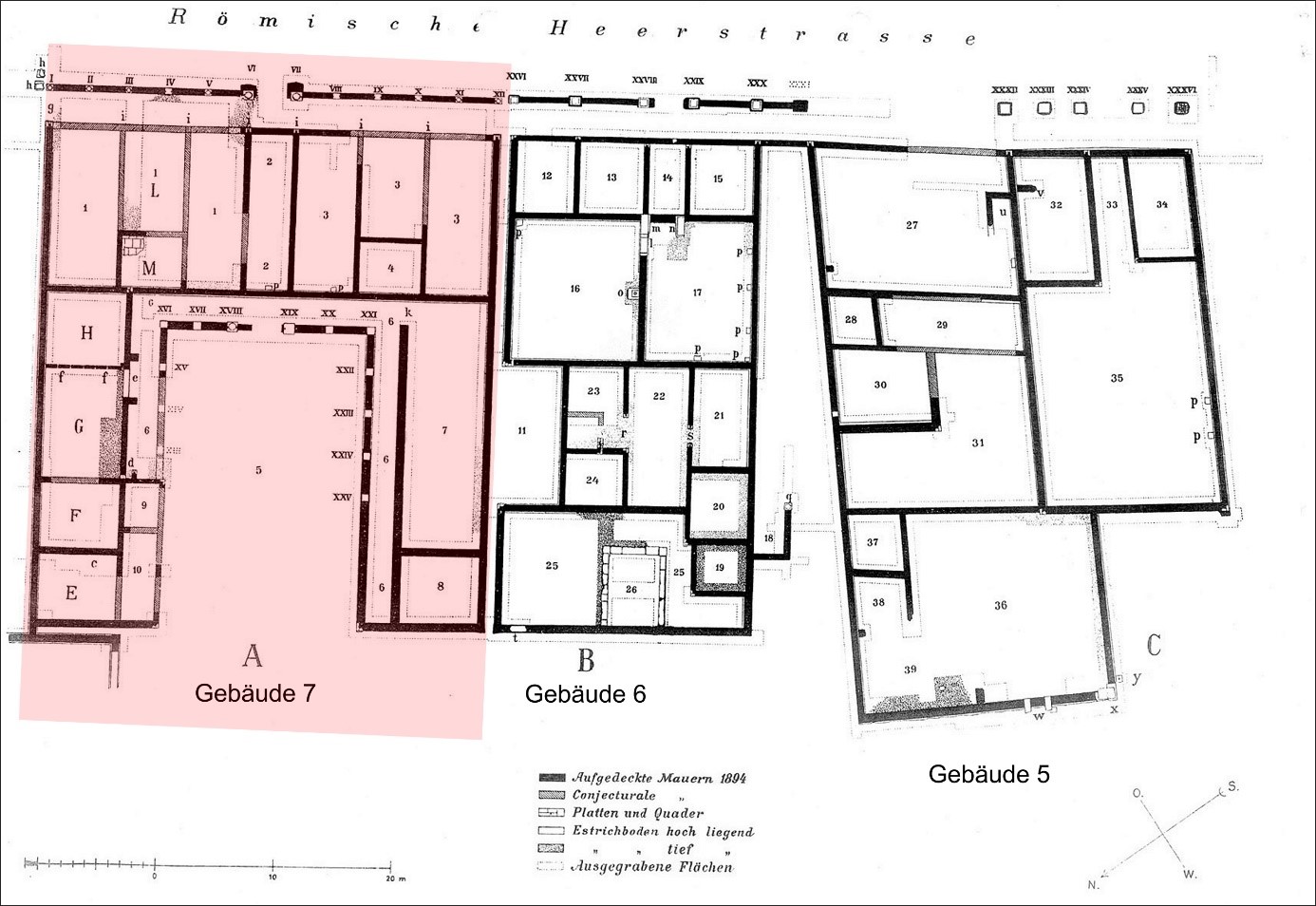Residential building, association building or hospitium?
Building research and three-dimensional reconstruction of a unique building in Roman Bregenz
Project organiser: Institute of Classical Archaeology
Project leader: Dr. Julia Kopf
Project staff: Dipl. Ing. (FH) Sabrina Geiermann (scandric 3D Solutions), Tomáš Sobihard, BA
Financing: state Vorarlberg and vorarlberg museum
Co-operation partner: Dr. Karl Oberhofer (Universität zu Köln)
Duration of the project: 01.08.2020–30.11.2020
As part of an interdisciplinary research project, the architecture and possible function of Building no. 7, which is unique in Roman Bregenz, was analysed in more detail. The main aim of the project was to achieve a scientifically sound interpretation of the building in Bregenz by means of a final building analysis carried out with an engineer from the discipline of architecture and by researching comparable buildings in the Roman Empire. As a usable result, a digital three-dimensional reconstruction model was created, which can be further utilised in various ways on a CAD basis. Apart from building research purposes, a true-to-scale representation can be realised as a 3D print for cultural mediation, for example.
The purpose of the building, which was constructed around 70 AD, cannot yet be determined beyond doubt, but based on comparisons of the floor plans, an interpretation as a praetorium (external seat of the provincial administration), hospitium (public accommodation) or association building (for the imperial cult?) seems most likely. The great significance of the building in the context of the settlement is also evident from the mensa ponderaria found here, which is still the only one in present-day Austria. Due to the lack of inscriptional evidence, however, the interpretation as a (semi-)public building cannot be proven with certainty at present, so that only in-depth research on this building – including consideration of the find material and the location within the settlement – can provide further evidence for determining its function.

Plan of the stone buildings A–C after Jenny 1896 (= building nos. 7, 6, 5 after Jenny 1898; see Oberhofer / Picker / Reiterer 2016).
Literature:
- M. Bader, Militärische und zivile Siedlungsreste aus der Römerzeit am Böckleareal in Bregenz. Ein Vorbericht. Jahrb. Vorarlberger Landesmusver. 2011, 8−67.
- S. Jenny, Bauliche Überreste von Brigantium. Jahrb. Vorarlberger Landesmusver. 1896, 16–25.
- S. Jenny, Topographie von Brigantium. Mittheilungen der K.K. Central-Commission für Erforschung und Erhaltung der Kunst- und Historischen Denkmale 24, 1898, 157–160.
- J. Kopf / K. Oberhofer, Forschungsprojekt Bregenz Böckleareal: eine Zwischenbilanz. In: Ch. Baur (Hrsg.), Ausgraben – Dokumentieren – Präsentieren. Jahresbericht des Instituts für Archäologien der Universität Innsbruck 2013 (Innsbruck 2015) 34 f.
- K. Oberhofer, Zwei bemerkenswerte Hohlmaßsteine aus Brigantium/Bregenz: Neue Erkenntnisse zur mensa ponderaria. Arch. Korrbl. 50, 1, 2020, 57–75.
- K. Oberhofer / A. Picker / U. Reiterer, Von der groma zum GIS. Der digitale Stadtplan von Brigantium/Bregenz. Fundber. Österreich 55, 2016 (2018), 535–554.
- J. Kopf, Soldiers, slaves, priests, administrative servants(?). Persons with Greek/oriental names in Rhaetia. In: Proceedings Limes Congress XXV, Nijmegen 2022 (in Redaktion)
